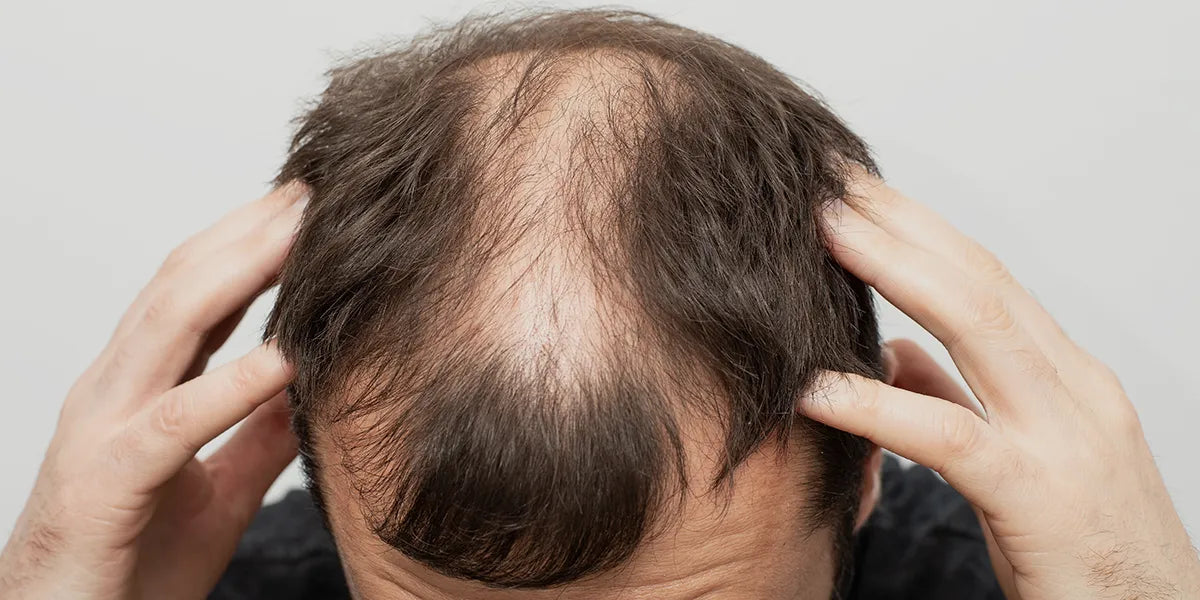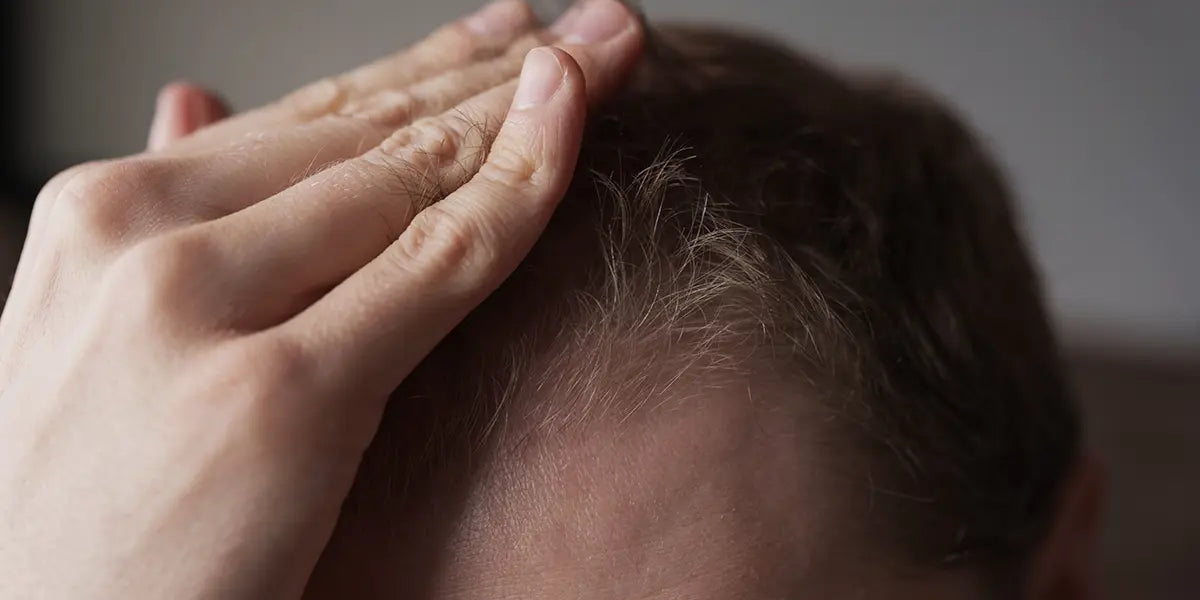Male pattern hair loss tends to occur in a predictable way. These patterns of shedding have been formalized in a clinical scale called the Norwood scale. Why is this important? It turns out that the staging of hair loss is an important part of determining the course of treatment.
Not sure if finasteride is right for you? A doctor can quickly determine whether you’ll have a good clinical result based on your Norwood score. Here, we provide a detailed overview of the scale, how it’s organized and why it can reveal information about the success rate of hair loss treatment.
What is the Norwood scale?
The Norwood scale is a tool that was created to standardize the assessment of male pattern hair loss. The first version of the scale was developed by Dr. James Hamilton in 1951. The 1951 version of the scale featured eight types of baldness identified using roman numerals I through VIII.
Groups I-III described less severe cases of alopecia, while groups IV-VIII referred to more advanced stages of hair loss. Within these broader categories, a number of subtypes were also identified.
Two decades later, the scale was modified by Dr. O’Tor Norwood, a dermatologist and hair transplant surgeon. This revised scale was more detailed as a result of the addition of two formal subcategories.
These subcategories made it possible to classify hair loss that occurred only at the hairline or at the top of the head (Lee et al., 2007). Norwood also removed a “wildcard” category (Type III) which was previously used as a catch-all for any unusual balding patterns that did not fit conventional criteria for hair loss.
XYON is proud to offer finasteride and dutasteride. Connect with an expert today to find out which one is right for you.


Get the right solution for your hair loss.
How to read the Norwood scale:
The Norwood scale is arranged in a grid-like system that combines three basic patterns of balding commonly associated with androgenetic alopecia (AGA):
Vertex balding: when balding occurs at the top of the head and spreads out radially.
Frontal balding: when the entire hairline begins to shift backwards.
Over time, these patterns gradually merge together to result in the appearance of overall baldness. The Norwood scale captures seven possible combinations of these three balding patterns:
- Type I - little to no evidence of a receding hairline (essentially a normal scalp)
- Type II - the beginnings of hair loss at both temples
- Type III - considered the minimum amount of hair loss needed to clinically diagnose balding; bitemporal recession is quite noticeable (these regions may be bald or only sparsely covered)
- Type IV - frontal balding and balding at the top of the head (crown) are now more severe; as a result of hair loss in these regions, the remaining band of hair in the mid-region of the scalp connecting hair on both sides of the head has become more prominent
- Type V - the band of hair separating the front of the head from the crown has narrowed; a sparse patch of hair between the temples may persist
- Type VI - the band of hair that once separated the front of the head from the crown regions has now disappeared
- Type VII - only a narrow strip of hair that wraps around the back of the head and sides remains, forming the classic “horseshoe” shape
There is room for variation within these seven main categories. If someone has a receding hairline (e.g. Types II-V) but no hair loss at the top of the head, this combination is referred to as a Type A variant (e.g. Type IIA, Type IIIA, etc.) (Wirya et al., 2017). Meanwhile, if hair loss has occurred primarily at the top of the head, with or without hair loss at the temples, this specific combination is called Type III Vertex.
These variations bring the total number of different types of male pattern hair loss to twelve. While the scale is comprehensive, some researchers have commented that the level of detail could negatively impact the reproducibility of assessments using this tool (Gupta & Mysore, 2016). For this reason, newer classification systems are being developed with the aim of further simplifying the tool, without compromising accuracy or reliability.
It's worth pointing out that the Hamilton-Norwood scale may be biased towards Caucasian males, since this group formed the basis of Norwood’s original data. In response to this, clinicians and researchers have begun designing scales for use in specific populations. For women experiencing pattern hair loss, a sex-specific tool called the Ludwig scale should be used instead.
Can the Norwood scale tell us if hair loss be reversed?
Yes, but timing is key. Research has shown that AGA is strongly associated with age. As a result, advanced hair loss (Hamilton-Norwood Type IV and above) is more frequently observed in older men. However, we also know that much younger men can suffer from hair loss and early intervention can help prevent, or even reverse it.
In 2015, a study explored the relationship between efficacy of once-daily finasteride treatment and the severity of AGA. Over 900 participants were enrolled, 801 of which were followed over a period of 5 years with regular photographic assessments.
The trial data revealed that the greatest improvement in hair regrowth was seen in individuals who started treatment earlier and specifically in men aged 40 or younger with a Hamilton-Norwood classification of Type IV or less (Yoshitake et al., 2015).
The takeaway on the Norwood scale
If you have a family history of male pattern hair loss and have started to notice changes in your hair or scalp health, we recommend that you consider talking to a doctor about next steps. Once a medical professional has assessed the extent of your hair loss, he or she will be able to make the appropriate recommendations for treatment to ensure that thinning hair is stopped in its tracks.




